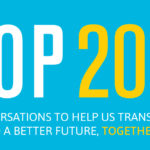A SOCAP Guest Post by Rehana Nathoo, VP of Social Innovation at the Case Foundation
At SOCAP last year, the Case Foundation co-hosted a standing room only session on open data for social good where we shared the work we were undertaking to build the Impact Investing Network Map. We were joined by ImpactSpace, SODA, USAID, ImpactUS and other inspiring organizations to explore how data, measurement and disclosure play a key role in promoting social good and expanding the impact investing sector. The enthusiasm in the room from platform creators that demoed their products and the entrepreneurs and investors that will use them was telling. It signaled a growing community looking to advance the practice of effective collaboration across data through powerful, user-friendly tools.
This lesson-learned roared to life last month as the Case Foundation launched the Beta version of the Impact Investing Network Map that we first explored at SOCAP.
Over the last two years, we’ve been working to design a data-driven visualization of impact investing transactions to-date. This easy-to-use tool intends to provide current and potential investors, intermediaries and social entrepreneurs a snapshot of what the impact investing market represents, searchable by geography, asset class and impact objective. By bringing the connections between actors to life—looking specifically at the investments that connect them—we can foster a better understanding of the size, breadth, depth, and, importantly, the enormous potential of the impact investing field.
But the lead-up to this campaign has been a long process of engagement with experienced investors and intermediaries to understand how this might have value to them. We spoke with wealth advisors, asset managers, family offices, and individual investors. These conversations painted a clearer picture of the barriers and opportunities they face and what elements they recommend be incorporated into the Impact Investing Network Map.
What We Heard
1. Putting information–even if imperfect–in the hands of investors is fundamental.
For impact investing to continue its move from niche to mainstream it needs to attract more investors and more capital. This makes the need for transparent and accessible data even more urgent. By creating a tool that puts information directly into the hands of the user and employing open, publically available data, we start to break down some of the barriers to growth.
As we’ve been building the Network Map, we’ve also discussed–at length–concerns about the quality and completeness of data. While publically available information helps to create accountability around disclosure, it also introduces concerns about data integrity. In considering the risk of showcasing potentially incomplete data, we heard investors say “build it and they will come.” Our stakeholders suggested that creating the infrastructure to showcase the data is a necessary first step. And indeed, we’ve found that one of the important roles the Network Map can play in this early stage is showcasing where the data gaps are, and where the sector needs to improve disclosure practices. Once these practices start to change, investors can and should take it upon themselves to improve the quality and completeness around their own activities.
2. Asset owners are looking to be empowered.
For many wealth advisors and intermediaries, there is also power in putting information directly in the hands of the decision makers–their clients. Oftentimes, their clients have a clear understanding of the impact they’d like to have, but limited exposure to how that looks within their investment strategy. Or they have insights into a company that aligns with their values but would like to know who else has invested, and how. By focusing on the relationships, the Network Map allows asset owners and wealthy individuals insight into which companies are solving the very same problems that they are interested in.
These same clients can also bring more to the table when they speak with their advisors. Many advisors we spoke with suggested that their clients make the final decisions around how to pursue their impact goals. The advisors are critically important in responsibly articulating those goals, but the clients themselves wield enormous power in shaping those objectives. For some of our stakeholders, a more educated and empowered clientele will help facilitate a concrete discussion around how they seek to have impact.
3. Advisors can also benefit from these tools.
Asset owners don’t bear the sole responsibility of self-education. A few wealth advisors and investors also voiced real enthusiasm for learning more about the impact investing field. A transparent ecosystem of relationships provides intermediaries with clarity on the types of investments that have been made across impact investing. What’s actually possible in the space. The ability to point to actual examples facilitates a more direct and actionable conversation.
This enthusiasm also came with some warning. Some advisors made clear that tools like the Network Map can’t–and shouldn’t–supplant the advisory model. A highly customized approach would be difficult to sustain for advisors with multiple clients and/or a continued commitment to portfolio diversification. But using the Network Map as an informational tool can demonstrate how the industry is evolving and we believe this is a natural starting point to fill the information gap.
How to #ShareYourData
We believe that by emphasizing the value of clear and transparent information we can accurately reflect the full scope of the impact investing landscape. We hope the Network Map will begin to do that. But to make that a reality we need accurate, reliable, sharable and standardized data.
That’s why we launched the #ShareYourData campaign. We are asking leaders in the impact investing movement to share their available data so that better mapping of the ecosystem can take place, demonstrating robust activity on the part of investors and entrepreneurs. It is our hope that investors, entrepreneurs and intermediaries will join us in pushing this movement forward.
You can join us as a Beta tester by signing up at casefoundation.org/networkmap or see your data visualized on the Network Map by sharing it directly with our data partner ImpactSpace, at impactspace.com.

Rehana Nathoo
Vice President, Social Innovation at the Case Foundation
Rehana Nathoo serves as Vice President of Social Innovation at the Case Foundation leading the effort around Impact Investing. Previously, Rehana worked at Bank of New York Mellon to help design the firm’s Social Finance effort and worked closely with the Wealth Management business around Impact Investing. Prior to joining BNY Mellon, Rehana was a Program Associate at The Rockefeller Foundation, working on program initiatives that pertain broadly to economic development and innovative finance, with a specific focus on impact investing. Rehana currently serves as an Adjunct Faculty member at Georgetown University’s Global Human Development Program, teaching on Impact Investing and holds degrees from Queen’s University and the John C. Whitehead School of Diplomacy.
To learn more about the Case Foundation’s Impact Investing work, read A Short Guide to Impact Investing.





